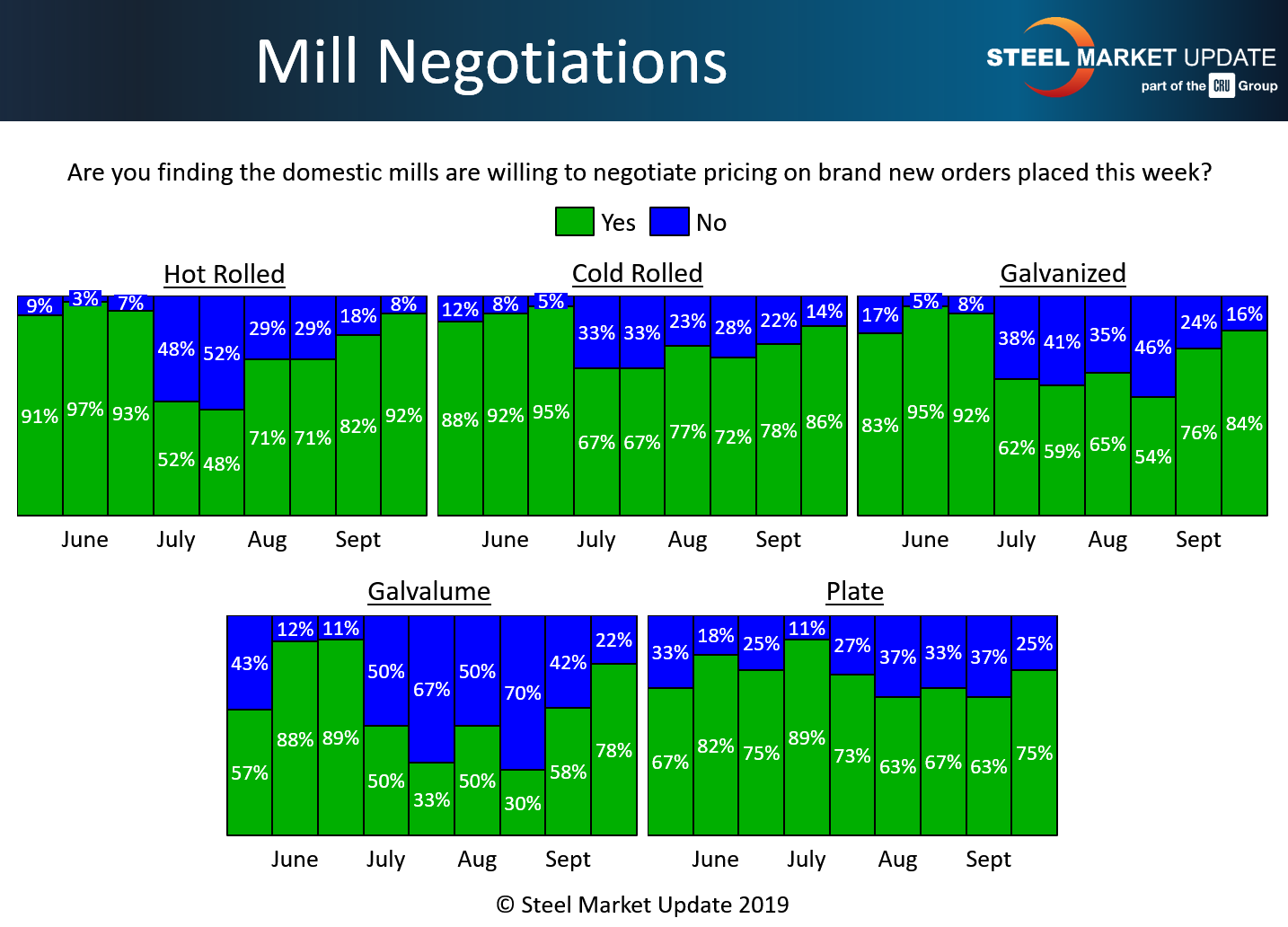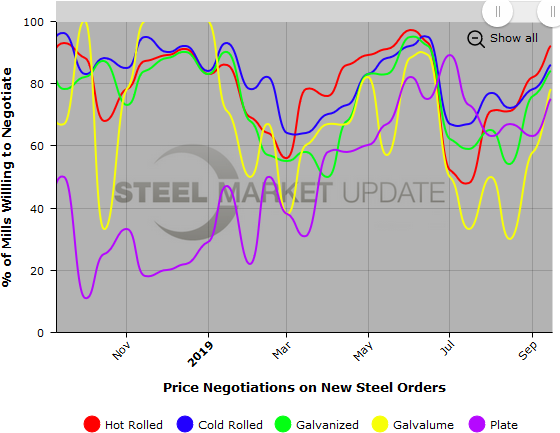SMU Data and Models

Steel Mill Negotiations: It's a Buyer's Market
Written by Tim Triplett
September 26, 2019
It has clearly become a buyer’s market as the vast majority of service centers and OEMs polled by Steel Market Update now report the mills actively negotiating spot prices as necessary to win orders of all types of steel products.
In the hot rolled segment, 92 percent of respondents to SMU’s market trends questionnaire earlier this week said the mills were open to price talks on HR, up more than 20 percentage points from a month ago. Just 8 percent said their mill suppliers were still holding the line on prices.
In the cold rolled segment, 86 percent said the mills were negotiating, up from 72 percent in mid-August, while just 14 percent said the mills are still standing firm.
Suppliers of coated steel are much more likely to discuss discounts than they were a month ago. Eighty-four percent said their galvanized suppliers are willing to deal, a jump of 30 percentage points from mid-August. Just 16 percent of respondents reported galvanized mills declining to compromise on price. Seventy-eight percent said the mills are now also open to price talks on Galvalume.
Three out of four buyers now report the plate mills open to negotiation, as well.
SMU data shows the benchmark hot rolled price has declined to about $550 per ton from around $700 per ton at the beginning of the year. The mills have given back all the short-term increases they saw following their three $40 price increases in June and July. SMU’s Price Momentum Indicator is pointing Lower for all products as prices are expected to decline further over the next 30 days.

Note: SMU surveys active steel buyers twice each month to gauge the willingness of their steel suppliers to negotiate pricing. The results reflect current steel demand and changing spot pricing trends. SMU provides our members with a number of ways to interact with current and historical data. To see an interactive history of our Steel Mill Negotiations data (example below), visit our website here.


Tim Triplett
Read more from Tim TriplettLatest in SMU Data and Models

SMU Survey: Sheet lead times ease further, plate hits one-year high
Steel buyers responding to this week’s SMU market survey report a continued softening in sheet lead times. Meanwhile, plate lead times have moderately extended and are at a one-year high.

SMU Survey: Buyers report more price flexibility from mills
Nearly half of the steel buyers responding to this week’s SMU market survey say domestic mills are showing increased willingness to negotiate pricing on new spot orders. This marks a significant shift from the firmer stance mills held in prior weeks.

SMU Survey: Buyers’ Sentiment Indices fall
Current Sentiment Index dropped six points to +42 this week compared to two weeks earlier. It has fallen in every successive survey since reaching a 2025 high of +66 on Feb. 19.

March service center shipments and inventories report
Steel service center shipments and inventories report through March 2024.

Apparent steel supply contracts in February
The amount of finished steel that entered the US market in February receded from January’s peak, according to our analysis of Department of Commerce and American Iron and Steel Institute (AISI) data.
